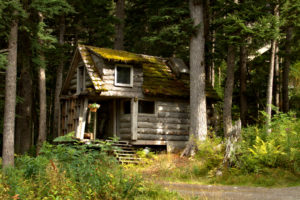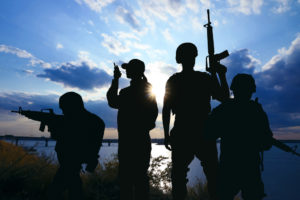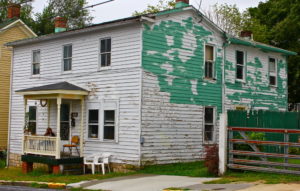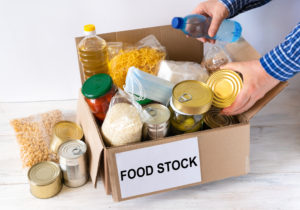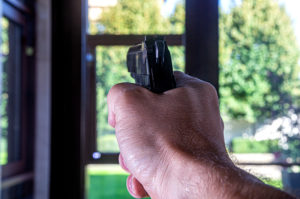Though Katrina hit more than a decade ago, I remember it like yesterday. Forty-eight hours before the pundits at
The hurricane itself would hit land some 150 miles away from our town, but the impact would be felt locally for days, months and years. Anything fresh was gone, all the fruits and vegetables gone. Fresh milk, cold juices, bottled water, soft drinks, and most of the beer were gone. A lot of the meat was gone unless you wanted calves liver or some other weird cuts. Cold cuts, cheeses, and all that were emptied out. There was nothing on the shelves that remotely resembled bread, rolls, bagels, crackers, English muffins or anything else you could spread peanut butter or jelly on. Oh, all that was gone, too. Virtually everything else in the store food and drink wise had been bought out. It was a ghost land. If you had not been in the first wave of panic shoppers 72 hours before the storm hit, then you were flat out of luck. The question is now and have we learned our lesson that if we plan a Bug In during a SHTF are we any more ready today, than we were ten years ago?
SKIP AHEAD
Societal Woes Arrive
Before I get into the meat of prepping your Bug In location for a SHTF, let me relay what also developed in the area
You Might Also Like: SHTF Firearm Choices
To abbreviate the details, for several months, many of these refugees remained in the regional area. Crime shot up 200%. Construction, roofing, and clean up crews flocked into the area from all over the country. Some literally preyed upon the citizens taking money, promising services, and then disappearing. It took law enforcement and other authorities too long to get a handle on controlling all of this activity. It left a really sour taste in the mouths of many, even those poised to help the honestly needy.
My point is, besides preparing your own property to withstand and survive any kind of a SHTF, you also have to prepare for the aftermath. In fact, in our case the aftermath was actually worse than how the SHTF impacted the region. At my own house and neighborhood we were lucky. Sure we went five days without power in August, when temperatures went over 100 degrees but we unofficially bonded together as neighbors to watch things and maintain control over our residential area. For days, I sat on the front porch eying trucks with out-of-state, out-of-county license plates file down the streets looking for opportunities. Perhaps it was the AR lying across my lap in the rocking chair that deterred them from stopping at my place. I hope so.
Home Assessment
You need to conduct a firsthand, thorough evaluation of your Bug In house and property. If you live in a housing
Also Read: Do You Need An AR15?
Most garage doors you can lock down in a variety of ways. However, like I mentioned above the really talented thieves will have a gas powered disk saw that will slice through an aluminum garage door or some steel home doors in a matter of seconds. They can also cut through the roof, around window frames, through non-brick sidewalls and other suspect points of entry. If you do not or cannot protect all of these points, then you have to devise a planning and train to defend yourself from inside.
Hey, Nobody is Home Here!
I’d love to hear from everyone in the comments below if you think posting a sign like that outside would have an
Related: SHTF vs. TEOTWAWKI
Having said that, I think during any kind of a SHTF either natural or unnatural that you want to maintain a low profile around your Bug In residence, unless you and a survival team or neighbors actively conduct armed patrols outside in full view. During the day, stay in the house as much as possible. Use only one exit and entry, one that is more out of public view from the street. At night, blacken a room you can stay in or keep all windows in the main living area securely covered permitting no light to be seen. Go outside yourself to double check this. This approach of course is a point of debate. Is it better to show a presence (armed) or maintain a discrete lack of visibility? What do you think?
Bug In SHTF Supply Up
This becomes the hard and fast of the survival part. You have to stock up enough water and food to sustain
Related: Breaking The Law When The SHTF
I recall when attending the University of Missouri back in the late 60s and 70s that the library in the center of campus was a storage site for supplies in the event of a NBC (nuclear, biological, or chemical) attack. Big drums of supplies, food, and water lined the basement halls and book stacks. As I look back today, no way would all those supplies have lasted hardly any time at all for a campus population of say 25,000 students, not counting everybody else. See my point?
So, anyway, initially think in terms of holding out for a month. That alone will be taxing enough. You may decide to go with plastic tubs, cardboard cases, or canisters of commercially available survival foods, MREs or other foods. I can see that as a good option, expensive, but not a bad plan.
You other options made easier by Bugging In at your own residence is to supply up with tons of canned goods of all kinds to weather the SHTF. I will not detail here nutritional requirements, quantities, calories, food prep, or such. There are much better resources out there to study for this information, but do keep these ideas in mind especially how you will “cook” food on what and such.
Just keep everything in perspective in terms of how many people you have to feed, and what their general likes and dislikes are. If you buy ten cases of potted meat, but nobody will touch it with a ten food pole, then you made a bad choice. Water supplies could be a real issue. It would be nice to hope that the sink tap water will continue to flow, but what if it does not or it is not drinkable? Storing large quantities of drinking water is problematic. I recommend filling milk jugs or other large gallon water containers to keep in the garage or basement. Maybe this could be done at the Nth hour before a storm of any kind hits, like they recommend filling bathtubs for extra water. I would plan on maintaining some water supplies though. It will always take more than what you planned on.
Also Read: Networking After TSHTF
A survivalist friend of mine maintains a stock of 50 cases of 24-bottles each of plastic bottled water. He rotates it by purchase dates. He only has 2-3 people at home to worry about, so I would think this much water would last a while, but who really knows how long? At least that is a start.
Now, make a list of all the other supplies you might need besides food and water. A starting list might include medicines, OTC items, paper products, candles, cell batteries, solar panel re-chargers, clothing, cleaning supplies, personal hygiene items, extra eyeglasses, medical/first aid kit(s), back up heater(s), fuels, propane, charcoal, AM-FM radio(s), CB radio, scanner, water filter, fire extinguisher(s), so on and so forth.
Bug In Defense
I hope at a future date to develop another article dedicated in more depth to this subject. For now, just know and
Remember the thugs pushing shopping carts down the streets of New Orleans in three feet of water loaded with electronics and other merchandise? This could and likely will happen even in your quiet little neighborhood, too, depending on how out of control everything gets after the SHTF resides. Expect it, prepare for it, and hope it never happens. So, there is a very thin thumbnail sketch of some Bug In contingencies that you may have to deal with and prepare for. We can sometimes see natural SHTFs like storms and severe weather coming somewhat in advance. Societal collapses are more difficult to predict. Some get out of hand so quickly it is hard to react, aka Ferguson, MO. Of course, planning and preparation is the key to survival.


